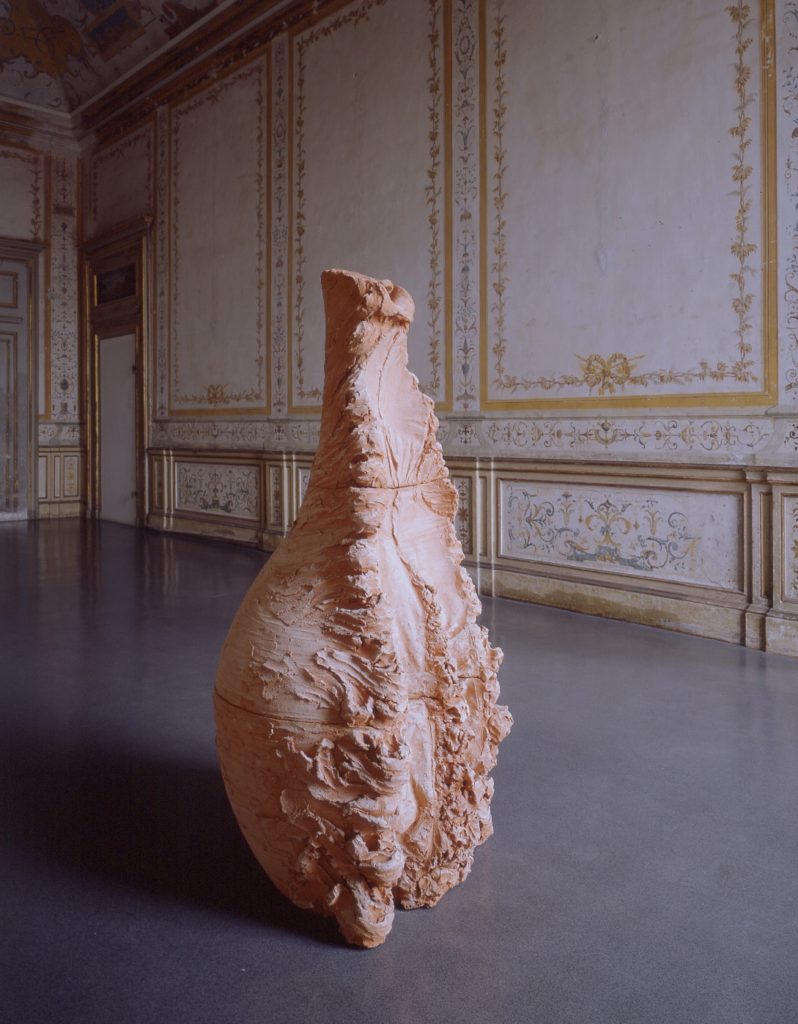Giuseppe Penone
Giuseppe Penone ’s exploration of the interaction between cultured and natural forms is central to his art. Believing that a common fluidity unites man and nature, in a continuous state of exchange and symbiosis, Penone interweaves an intense and complex discourse that analyzes reality and material.
Starting with personal reflections tied to the cultural context in which he was raised and to the historical moment in which he began working as a sculptor, the artist translates his connection to the earth and the landscape into his own artistic vocabulary. The image of the tree and the body have always been the supporting structure of his artistic enterprise, and he directs the content of his investigations both toward nature, with the intention of visualizing and modifying the processes of natural growth, and toward the body, a constant subject for his work. His art examines mechanisms linked to transformation and investigates the sensual dimension of materials, asserting an intention to construct an evolutive continuity with the artistic references of classical sculpture.
Albero di 5 metri (5-meter Tree),1969 –70,and Albero di 11 metri (11-meter Tree),1969 –89,belong to a cycle of works called Alberi (Trees),which the artist worked on from 1969 until recently. Beginning with industrial wooden beams, he carves, scores,and “excavates ” the wood, to bring out the original tree ’s trunk and branches, which he identifies through the knots that are still visible in the beam.
With a process the artist has defined as “barking ” (the removal of the bark),he extracts the form of a younger tree, whose image is still preserved within the beam. These works attest to his interest in the process phase of the work, and while conceived as autonomous and independent forms, they are the result of cohesive examination of the regeneration of the forest, as seen in a large installation he created for the Stedelijk Museum in Amsterdam, in 1980.
In Soffi (Breaths)a series created beginning in 1978, Penone taps into the world of mythology for the image of breath as the origin of man and a vital and energetic element. Mindful of classical philosophical musings, in Soffio di creta H (Clay Breath H),1978,he attempts to give solidity to the immaterial, reproducing the volume of his own breath, which takes on physical consistency and assumes the form of a vase imprinted with the mark of his body, shaped into the clay. It is a work that analyzes the act of exhaling, in which air, expelled from the lungs, becomes form upon contact with the atmosphere. It is a way of creating an invisible sculpture that accompanies us day after day, throughout our lives.
Respirare l ’ombra (Breathing the Shadow),1999,belongs to a group of more recent works in which, using large-scale installations, Penone develops visual and sensory paths into his expressive world. Even though separated by more than twenty years, this work can be seen as thematically complementary to the Soffi .If in the Soffi he investigates and penetrates the moment of exhalation, in this sculpture the artist focuses on the moment when we breathe in. The work is presented as an environment covered in bay leaves, with a bronze lung visible at the center of one of the walls. Combining the intense od or of the leaves with the idea of breathing, the artist not only defines the boundaries of the space and the shape of the place, but also confirms that the artist ’s interest is not directed toward representation, but rather toward the evocation and suggestion of a poetic image.
Pelle di foglie (Sguardo a terra )(Skin of Leaves – Downward Glance),2003,also fits into Penone ’s continuous investigation of surfaces, the sensitivity of the skin, and the relationship between the natural and human worlds. Here, references to nature and a comparison with the poetic content of its forms explore the primary relationship with the material, evoking its mythical aspects. The image of an arboreal figure, which extends into the space, is the emanation of a memory tied to the classics of our culture, in which mythology is never a direct source, but rather a suggestion, an impression that encounters an echo and a foundation in the celebration of nature, in empathy with the natural world. The sensuality of this sculptural form finds correspondence in the medium employed —bronze —the quintessential metal used in classical sculpture. Penone, who has always been open to the use of vast range of materials, has a particular predilection for bronze, a metal which, through its metamorphic properties, summarizes the artist ’s aesthetics and allows his feeling for the infinite fluidity of matter to emerge.
[GC]




